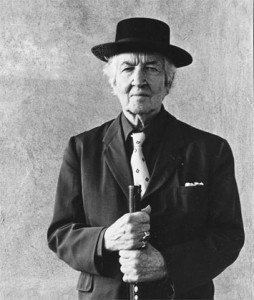 Born in 1895 in London, Robert Graves is perhaps one of Britain’s most successful and best loved poets and novelists of the 20th Century. Perhaps better known for his historical novels such as I, Claudius and his war memoir Good-Bye To All That, he was also a prolific poet and critic.
Born in 1895 in London, Robert Graves is perhaps one of Britain’s most successful and best loved poets and novelists of the 20th Century. Perhaps better known for his historical novels such as I, Claudius and his war memoir Good-Bye To All That, he was also a prolific poet and critic.
For a man who lived to the grand old age of 90, he suffered bouts of illness throughout his early life. At the age of 7 pneumonia and measles nearly took his life, in the First World War he was badly injured and shortly after the war ended he contracted Spanish influenza.
In his youth, Robert Graves went to a number of schools in the Wimbledon area where he was brought up and in 1909 he won a scholarship that saw him attending Charterhouse where he first began to write poetry. At the time he was often persecuted because of his German parentage, something that would plague him occasionally through the First and Second World Wars.
When war broke out in 1914, the 19 year old Graves enlisted immediately. He continued to write his poetry and was friends with Siegfried Sassoon, publishing his first collection in 1916 called Over The Brazier. He quickly gained a reputation as a war poet, writing realistically about life on the front. He was present at the Battle of the Somme and was badly injured from a shell fragment which lodged in his lung. Though he wasn’t expected to recover, he did so and spent the rest of war time back at home in England.

When Sassoon was put up for court martial, Robert Graves intervened, saying that he was suffering from shell shock and perhaps saving his friend from an appointment with the firing squad. In 1917, Graves published Fairies and Fusiliers that in part documented his friendship with Sassoon.
After the war finished, Graves was physically and mentally exhausted. He had a wife and children to take care of but went to Oxford to take up the studies that were interrupted by the war, mixing with such leading lights of the time as T.E. Lawrence. His life after university was more uncertain – he tried running a shop but failed and, eventually in 1926, took up a post in Cairo but became separated from his wife.
He returned to writing, publishing a biography of Lawrence and the memoir Good-Bye To All That which were both successful. Over the years he had produced a number of poetry works including Mock Beggar Hall in 1924 and To Whom Else? in 1931, though he was better known for prose works such as I, Claudius. By this time he was in a relationship with poet Laura Riding and moved to the United States with her. Theirs was a volatile affair and it ended towards the end of the 30s when Graves returned to England and began a relationship with Beryl Hodge, the friend and collaborator on one of his most notable works The Long Weekend.
In 1955 he produced one of his most enduring works in The Greek Myths which retold the old classic stories and imbued them with new meaning. He continued to write poetry and novels throughout his life and was later commemorated along with 15 other war poets at Westminster.

In his 70s Graves began suffering from dementia, with severe memory loss, and by the time he was 75 he had stopped writing. He had published over 140 works during his lifetime. Robert Graves finally died from a heart attack at the age of 90 in 1985. He was buried in the Romanian village of Deia.

